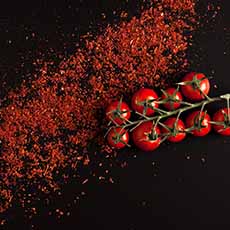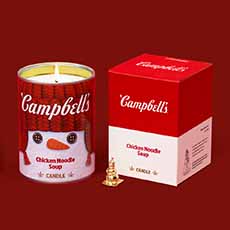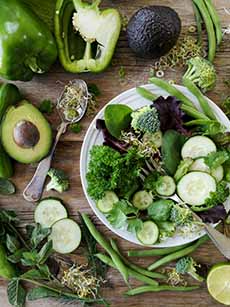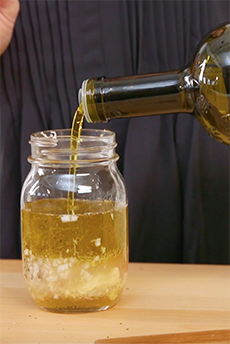|
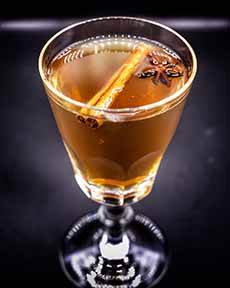
[1] All of the toddies here are shown in clear glasses or mugs. Why? It makes the drink look better (photo © L’Adresse | NYC).

[2] In Colonial times a pat of butter was added to the toddy, creating Hot Buttered Rum. It clouded the drink, but in those days, everything was drunk from a ceramic or metal tankard (photo © Hella Cocktail Co.).
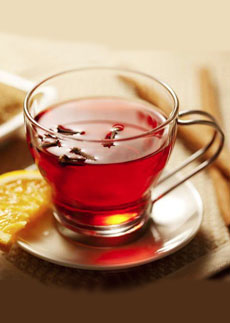
[3] Black tea with cloves is a classic base for a toddy. The lemon can be squeezed into the drink or added as a floating garnish (photo © Ruth’s Chris Steak House).

[4] If you prefer green tea, make your toddy with it (photo © Republic Of Tea).

[5] Use a base of spiced tea or chai for a spicy toddy. Constant Comment makes spiced tea in both black and green—and decaf, too (photo © Bigelow Tea).

[6] Go ahead: Add your favorite spirit to the toddy (photo © Mount Gay Rum).
|
|
The word “toddy” typically evokes thoughts of a hot drink with rum or another spirit. For most people, a toddy isn’t a toddy without spirits, but if you’re observing Dry January, the tea toddy recipes below are ideal. Hankering for a spirited toddy? Check out our toddy recipes. (LINK) National Hot Toddy Day is January 11th, National Hot Tea Day is January 12th and National Hot Buttered Rum Day (a rum toddy with a pat of butter) is January 17th.
These recipes, courtesy of Adagio Teas, are perfect for today, National Hot Tea Day (and it just happens to be freezing where we live.)
Take your pick of a black tea or a green tea toddy, and you can also add alcohol for a classic toddy.
Herbal teas work well too if they do not conflict with the spices. Consider chamomile or hibiscus, and use them in the same quantities as noted below.
> Hot Toddy History
> Hot Toddy Relatives (Glögg, Mulled Wine, etc.)
RECIPE #1: BLACK TEA TODDY
You can substitute a cinnamon stick instead of ground cinnamon. The stick can also serve as a stirrer.
Or, take a shortcut and use a spiced tea or chai blend like Constant Comment (photo #5).
Ingredients For 1 Drink
1½ cups hot black tea (Keemun, Assam, or your favorite breakfast blend)
1 tablespoon honey
1 teaspoon lemon juice
½ teaspoon ground cinnamon
¼ teaspoon EACH, ground cloves and ground nutmeg
1 lemon wedge for garnish of extra juice
Optional alcohol: ¼ cup of whisky, rum, vodka, rye, or bourbon
Preparation
1. BREW the tea. First, pour the honey, lemon juice, cinnamon, cloves, and nutmeg into a large mug. Then pour in the hot tea. Stir until both the honey and spices are completely dissolved.
2. MAKE a horizontal slit through the bottom flesh of the lemon wedge so it sits on the rim of the mug. Drink up!
RECIPE #2: GREEN TEA TODDY
For a strong alcoholic toddy, use only 1/4 cup of brewed tea. Otherwise, use the full 1-1/4 cups.
Ingredients For 1 Drink
1½ cup hot brewed green tea (Gunpowder or Sencha)
1 tablespoon honey
¼ cup whisky (Irish, Scotch, or Japanese Scotch are particularly good here)
1 lemon slice
Preparation
1. BREW the tea. Add 1/4 cup of tea into a mug. Stir in the honey until it completely dissolves. Then add the rest of the tea. For the alcoholic version, use 1/4 cup of tea and 1/4 cup of whiskey. First blend the tea and honey, then add the whiskey.
2. GARNISH with a lemon slice or wedge.
MORE HOT TODDY RECIPES
Apple Ginger Hot Toddy
Beer Hot Toddy
Caramel Hot Buttered Rum
Chocolate Hot Buttered Rum
Classic Hot Buttered Rum
Glögg
Hot Apple Toddy With Sherry & Calvados
Hot Gin Cider
Sake Hot Toddy
Scotch Toddy
Spiced Cider
MORE HOT TODDY HISTORY
Thanks to Adagio Teas for this bit of beverage history. There are three tales, all of which are a bit “blurry,” according to food historians.
Story #1: The drink first appeared in the early 16th century in India. It was named tārī (a Hindi word pronounced taddy), which was made from fermented tree sap, and was a popular folk remedy for congestion. The mixture, originally served cold, included alcohol, sugar, water, and spices. Adding hot water, and later hot tea, turned it into a remedy for colds and respiratory congestion.
Story #2: The toddy was created by Irish doctor Robert Bently Todd, who prescribed it to his patients as a cold remedy. The recipe blended hot brandy, canella (cinnamon), sugar syrup, and hot water.
Story #3: The Scots developed the hot toddy to make raw Scotch whisky more palatable. They added sugar, dates, saffron, mace, nuts, and cinnamon. As whisky makers became more adept, there was less call for spices or sweeteners, yet the idea of a hot drink with spices and alcohol endured because it tastes good and, yes, it makes one feel better.
Medical professionals agree that a hot toddy can be good for colds and mild respiratory congestion. Both the Common Cold Centre at Cardiff University in the U.K. and the Mayo Clinic in the U.S. have cited the spices, which stimulate saliva to help ease a sore throat, and the combination of lemon and honey stimulate mucus drainage. And, of course, warm liquids ease congestion and prevent dehydration. Neither institution suggests large doses of whiskey, but agrees that a small amount can ease the stress that comes with being ill from a cold.
|

